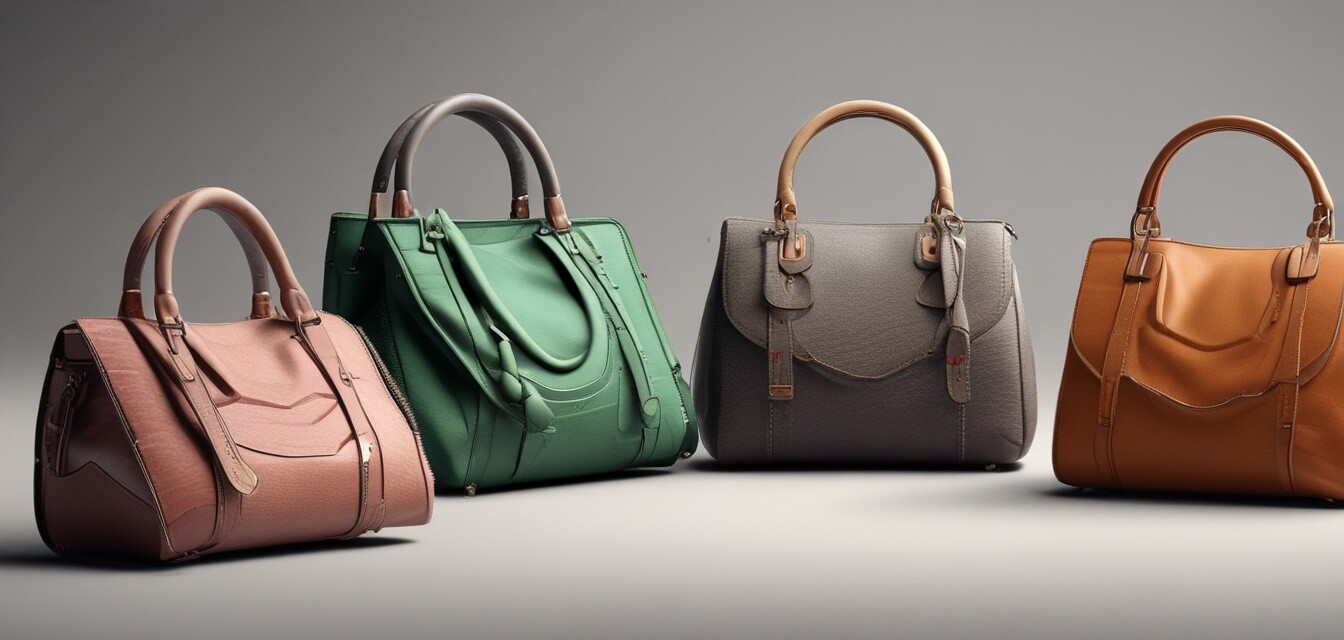
Please note that product recommendations and endorsements on this site are based on AI analysis and do not reflect personal opinions, hands-on testing, or real-world usage.
We aim to provide accurate and helpful information, but always recommend conducting your own research before making a purchase.
Trends in sustainable adjustable strap handbag design
- Sustainability is becoming a priority in handbag design.
- Materials like recycled fabrics and eco-leather are becoming mainstream.
- Adjustability and functionality are essential for modern consumers.
- Major brands are adopting eco-friendly practices.
- Future trends point toward innovations in functionality and style.
As we step into 2025 and beyond, the fashion industry continues to evolve, with an increasing focus on sustainability. Adjustable strap handbags are no exception. As consumers become more eco-conscious, designers are responding by innovating and incorporating sustainable materials and practices in handbag design. This article explores how sustainability is shaping the future of adjustable strap handbags and examines the latest trends in this exciting niche.
The growing demand for sustainable fashion
In recent years, the push for sustainability has grown exponentially among consumers. Many shoppers are now looking beyond just the aesthetics of their purchases. They are concerned about the impact that products have on the environment. As a result, brands in the fashion industry, particularly those specializing in bags, are innovating to meet these market demands.
What consumers want
Today's consumers are looking for handbags that combine style, functionality, and an eco-friendly footprint. Here are some primary factors influencing their decisions:
- Recyclable and biodegradable materials
- Long-lasting durability
- Ethically sourced production
- Trendy and versatile designs
Emerging materials in handbag design
One of the biggest shifts in handbag design is the types of materials being used. Here are some notable sustainable materials being adopted:
| Material | Description | Benefits |
|---|---|---|
| Recycled Fabric | Fabric made from post-consumer plastic bottles. | Reduces waste and utilizes fewer resources in production. |
| Eco-Leather | Leather treated with non-toxic processes or sourced from sustainable practices. | Minimizes environmental impact associated with traditional leather production. |
| Organic Cotton | Cotton grown without harmful chemicals and pesticides. | Safer for the environment and workers. |
| Pineapple Leather | A leather alternative made from pineapple leaves. | Biodegradable and a byproduct of the food industry. |
Adjustable design as a necessity
The feature of adjustable straps is not just a stylistic choice but also a nod to functionality. Each adjustable strap handbag can serve multiple purposes, which adds to its value. Here are some reasons why adjustability is trending:
- Versatility in styling options—carried as a shoulder bag, crossbody, or backpack.
- Personalized fit—allowing consumers to customize their comfort level.
- Increased usability for active lifestyles—ideal for those on the go.
Major brands leading the way
Many brands are stepping up to champion sustainable adjustable strap handbags. They are innovating their entire supply chain to prioritize eco-friendliness. Some recognized names include:
- Casual Everyday Bags brands are incorporating sustainable practices.
- Evening & Party Bags are showcasing eco-conscious materials.
- Luxury & Designer Bags are working on transparency in sourcing.
Focusing on long-lasting designs
Sustainable handbag design is evolving to emphasize durability. Customers are looking for handbags that withstand the test of time rather than cheap, disposable options. Strong stitching, high-quality zippers, and reinforced seams are becoming common features. The trend towards longevity not only benefits the consumer but also the environment by reducing waste.
Conclusion
In conclusion, the future of adjustable strap handbags looks bright with sustainability at the forefront. As brands continue to innovate and adapt to consumer demands, we can expect to see exciting new offerings that satisfy eco-conscious shoppers. The combination of stylish design, functional adjustability, and sustainable materials will redefine what we expect from handbags in 2025 and beyond. To keep up with the latest trends, check out our articles in the News & Trends section for more insights into the handbag industry.
Pros
- Eco-friendly materials reduce environmental impact.
- Versatile designs cater to various lifestyles and occasions.
- Sustainable practices may enhance brand loyalty.
Cons
- Sustainable materials can be more expensive to produce.
- Limited availability in some markets.
Tips for choosing sustainable handbags
- Research the brand’s materials and manufacturing processes.
- Look for certifications related to sustainable practices.
- Consider the handbag’s versatility and durability.
- Invest in timeless designs that won’t go out of style.

